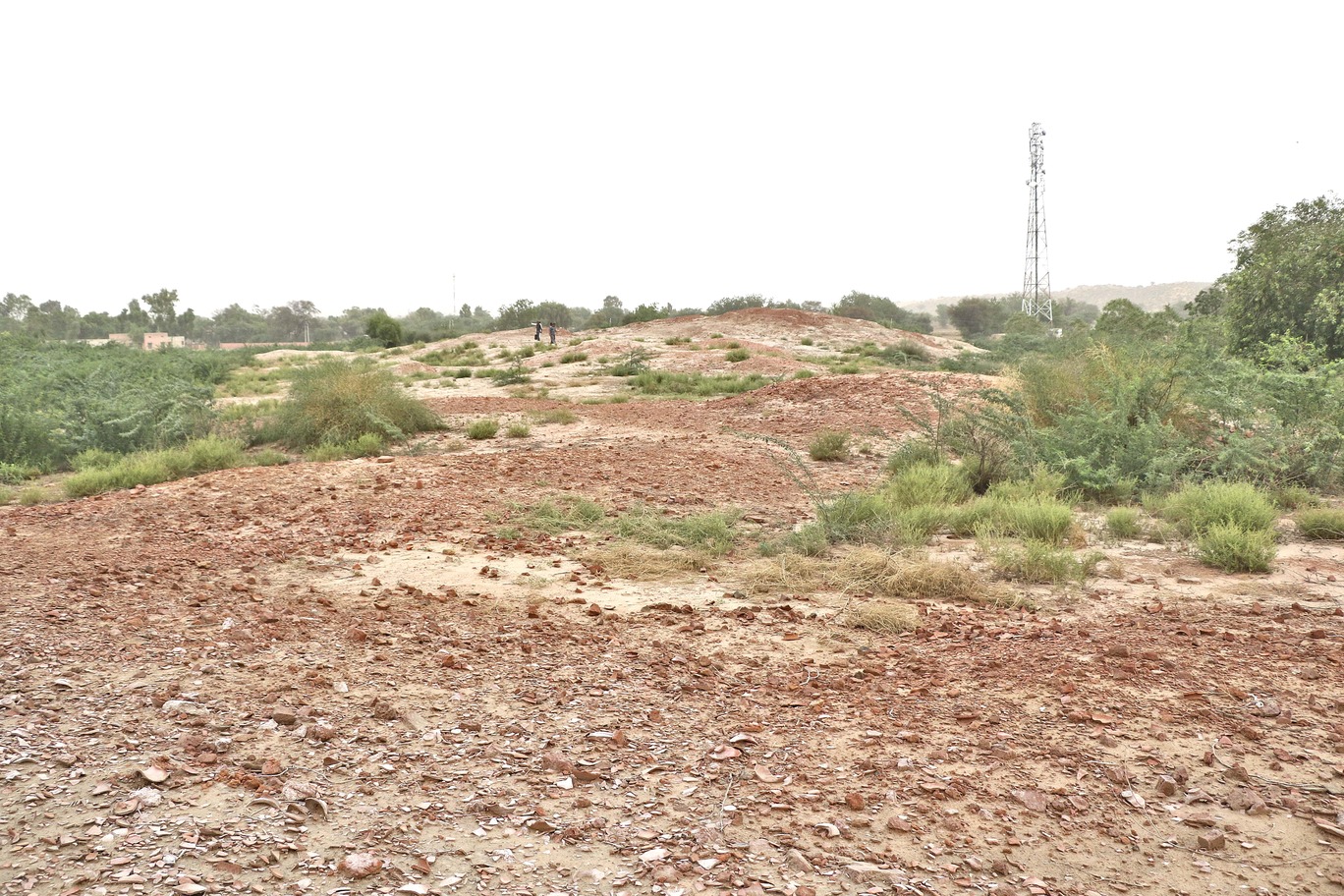
The early historical site was excavated by the Swedish Archaeological Expedition, during 1952-54 . The first settlement was laid around 250 CE, during the Kushana period and flourished up to the sixth or seventh century CE. During excavations, coins of Kanishka III, besides the murundas and three earlier coins of Kanishka-I, Huvishka and Vasudeva and a seal paleographically datable to 300 CE, have been found. Excavation has revealed eight structural phases as well. The structures were built of mud-bricks of varying sizes, with the average brick size being about 32 x 23 x 7 cm. The bricks were laid in the English bond system. The floors were paved with mud-bricks. The houses were rectangular with north-south orientation. The site is famous for the manufacture of typical ceramic industry termed as Rang Mahal ware culture. This distinctive pottery is wheel-made and reddish or pinkish in color. The types include globular or oval jars and hand-dish with pronounced rims, externally rusticated showing wavy ribs. In some cases the shoulder and the neck are painted in black-on-red polished surface, other types are spouted vase, sprinklers, cooking vessels, storage jars, beakers with or without handles, bowls of different varieties, lamps, incense-burners, etc. A few carinated handishes have textile marks on the body. Moulded pottery is represented by the bowl and miniature basin. The decorations on the pottery consist of applied and incised patterns and paintings. The cultural assemblage also includes figurines in faience, terracotta animal figurines, carts and wheels, weights, balls, flesh-rubbers, discs, dice, votive tanks, potters stamps, pendants, ear-ornaments, beads of coral, paste, lapis lazuli and shell rotary querns, mullars, pestles and bone and iron objects.